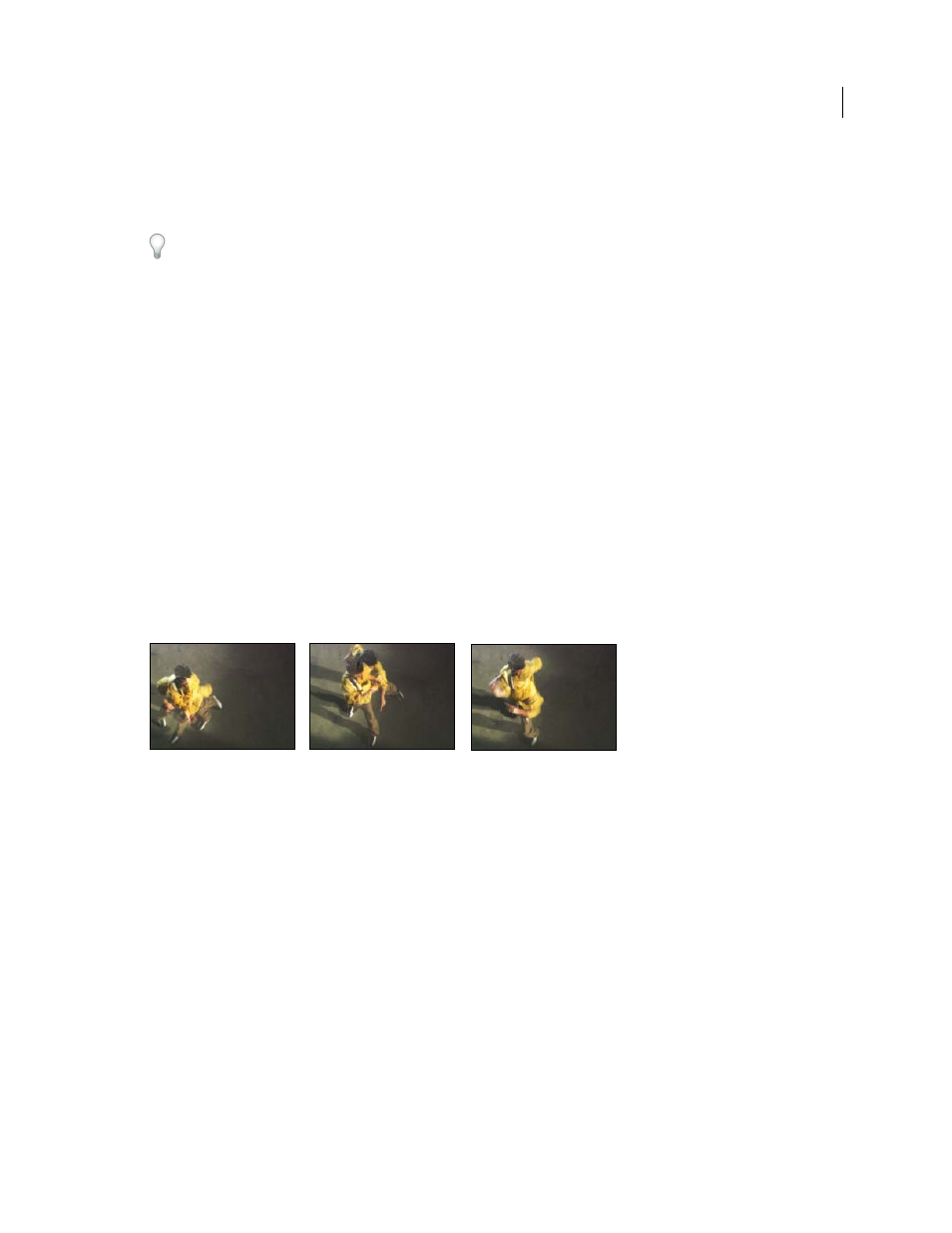Time effects, Echo effect – Adobe After Effects CS4 User Manual
Page 602

596
USING AFTER EFFECTS CS4
Effects and animation presets
Last updated 12/21/2009
Alternatives to using the Timecode effect
Use text layers for greater control over text formatting and text animation. (See “
Creating and editing text layers
page 341.)
Apply the Current Time Format animation preset to a text layer to show the current time in the format corresponding
to the time display setting for the project.
that show how to use an expression on the Source
Text property to animate text to overcome some of the limitations of the Timecode effect.
Example: Animate text as a timecode display
Time effects
Echo effect
The Echo effect combines frames from different times in a layer. The Echo effect has a variety of uses, from a simple
visual echo to streaking and smearing effects.
The results of this effect are visible only if the layer contains change across time, such as motion in a layer based on a
video footage item. This effect does not create echoes of motion created by moving the layer itself within the
composition. To create echoes of motion created by moving the layer within the composition, precompose the layer,
move all attributes into the new composition, and apply the Echo effect to the precomposition layer.
This effect works with 8-bpc, 16-bpc, and 32-bpc color.
Echo effect
the Particle Playground effect, and the
loopOut
expression to animate a swarm of stylized swimming bacteria.
Echo Time (seconds)
The time, in seconds, between echoes. Negative values create echoes from previous frames;
positive values create echoes from upcoming frames.
Number of Echoes
The number of echoes. For example, if the value is 2, the result is a combination of three frames:
the current time, the current time + Echo Time, and the current time + (2 * Echo Time).
Starting Intensity
The opacity of the first image in the echo sequence.
Decay
The ratio of the opacity of an echo to the opacity of the echo preceding it in the echo sequence. For example, if
Decay is 0.5, then the opacity of the first echo is half of the Starting Intensity; the second echo is half of that, or one
quarter of the Starting Intensity.
Echo Operator
The blending operation used to combine the echoes.
•
Add
Combines the echoes by adding their pixel values. If the starting intensity is too high, this mode can quickly
overload and produce streaks of white.
•
Maximum
Combines the echoes by taking the maximum pixel values from all of the echoes.
